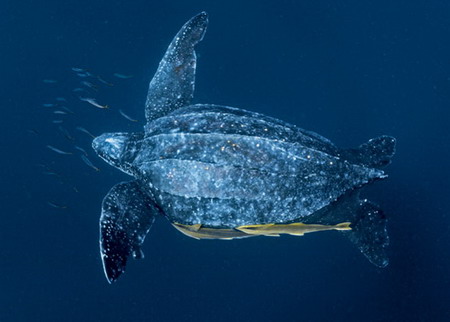How deep can a turtle dive and how fast does a turtle crawl?

The leatherback turtle can dive to great depths. Leatherback turtles equipped with depth recorders dove to over 1,000 meters (3,300 feet) deep. This depth exceeds that reported for any air-breathing vertebrate with the possible exceptions of sperm whales and elephant seals. The shallowest dives occurred at dusk and the deepest at dawn. These leatherbacks were probably feeding on jellyfish that concentrate below 600 meters (2,000 feet) during the day and move into surface waters at dusk. The turtles dove almost continuously with only brief intervals at the surface to breathe.
In a study published in 2008, it was found that during the daylight hours, diving depth of two adult green turtles was shallow (1–4 m). It was assumed that the turtles were moving deliberately toward their destination during this time. Between 1900 and 1930 h daily, the turtles began a diving pattern consisting of deep dives with a mean maximum dive depth of 35–55 m. The shallow diurnal diving began between 0600 and 0700 h, after the nocturnal deep-diving pattern ended. The adult female made two dives in excess of 135 m and one male made several dives in excess of 100 m. These are the deepest dives ever recorded for a naturally diving green turtle.
A turtle’s shell can be important in several ways. It can help the turtle protect itself from predators. The shells of some turtles are so thick and strong that they can even resist the bite of a large crocodile. Other turtles, such as Asian river turtles, often dive very deeply, where the water pressure would be severe enough to crush their lungs if they were not protected by the shell. In turtles that live in very dry places, the shell provides a shield from the sun and helps the turtle keep from drying out too much (Source: Turtles and Tortoises: Testudines – Behavior And Reproduction)
How fast does a turtle crawl?
As for how fast turtles crawl, here’s a 32-second video of a few river terrapins crawling into the river:

